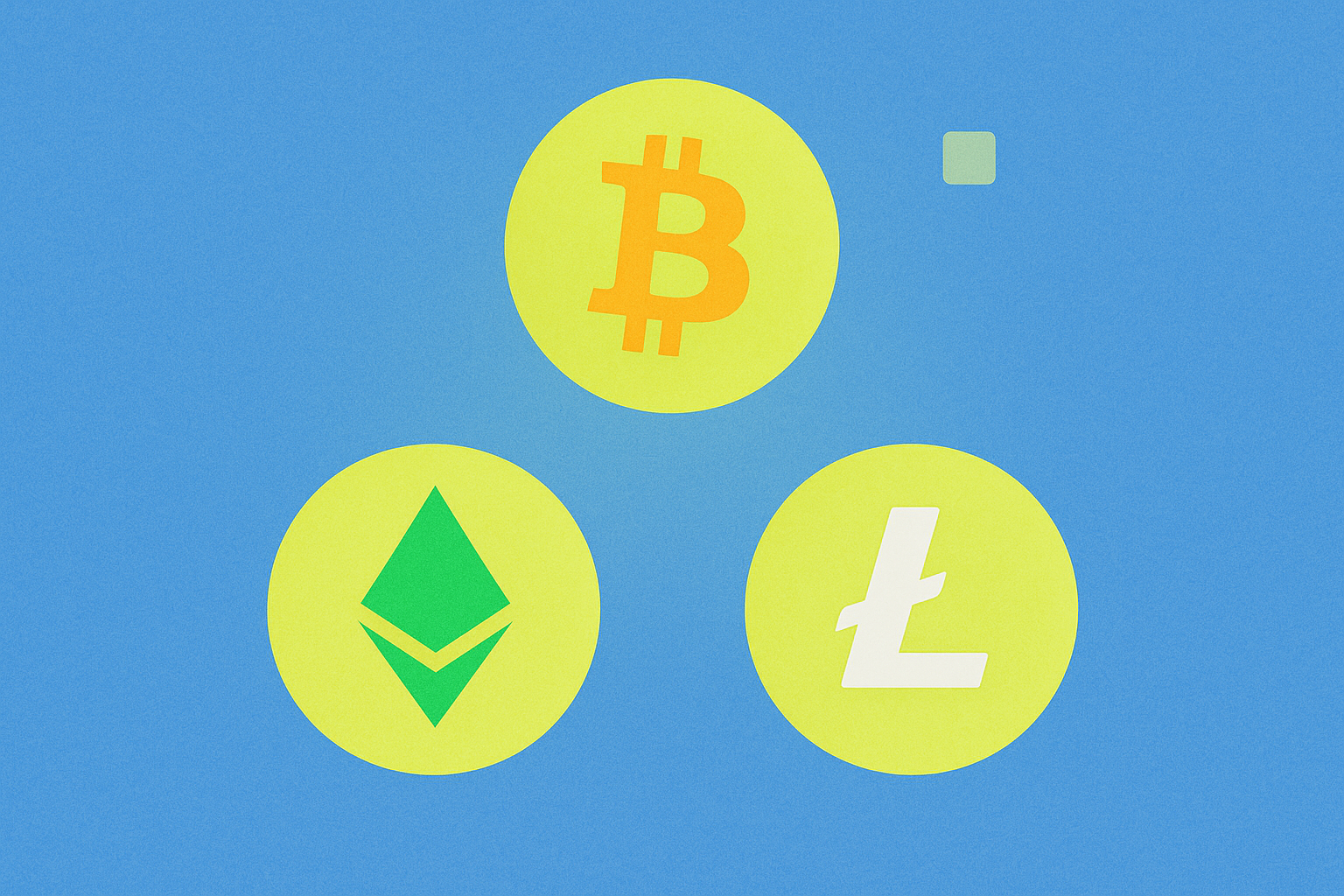波場幣(TRX),比特洛雷(BTT),和太陽代幣(SUN):Justin Sun的加密貨幣生態系統能否在2025年月球上升

在加密貨幣世界中,很少有人像孫割(Justin Sun)這樣大膽而雄心勃勃。孫割是波場幣(TRX)的創始人。在過去幾年中,孫割建立了一個生態系統,不僅僅局限於波場幣區塊鏈本身,還包括代幣,比如比特 (BTT)和SUN代幣 (SUN). 這次專業深入探討了波場幣和孫割的背景,BTT和SUN在波場生態系統中的聯系,它們的歷史價格波動,以及短期未來可能爲每個幣種帶來的情況。這三種代幣——波場幣,BTT和SUN——都在主要交易所上進行活躍交易包括Gate.com),凸顯了它們在加密貨幣市場中的相關性。
波場幣的願景和孫割的領導力

波場幣是由孫割於2017年推出的區塊鏈平台孫割孫割,一位年輕的科技企業家,決心“去中心化網路”。孫割是阿裏巴巴的馬雲的門生,也是《福布斯》雜志30歲以下精英榜的校友,他將波場幣設想爲內容創作者分享應用程序和媒體的基礎設施,無需中間人。在他的領導下,波場幣通過積極營銷和高調舉措迅速引起關注,尤其是2018年收購BitTorrent Inc.公司。孫割富有魅力(有時也頗具爭議)的領導風格使波場幣一直處於頭條新聞中,從舉辦奢華的促銷活動到直接在社交媒體上與波場幣社區互動。
波場幣的網路採用了委托權益證明(DPoS)模型,利用27名當選的“超級代表”來驗證交易。這種設計使得波場幣能夠以最低的費用處理大量交易,這是孫割經常吹噓的優勢。多年來,波場幣已經從簡單的內容分享發展成爲在諸如去中心化金融 (DeFi)和穩定幣。實際上,波場幣的區塊鏈現在托管了大量的Tether (USDT)穩定幣,每天便利數十億美元的轉帳。截至2025年初,波場幣網路擁有超過3億用戶帳戶,這證明了它在亞洲的廣泛採用,特別是在低成本轉帳需求量大的地區。
波場幣(TRX)是推動該網路運行的本地加密貨幣。TRX用於支付交易費用,通過質押來保護網路,並參與治理投票。這種代幣在市場上經歷了戲劇性的旅程。它在ICO後開始交易約爲0.002美元,然後在2017年至2018年的加密貨幣繁榮期間飆升,於2018年初達到約20-25美分的峯值。這種狂熱的漲之後是不可避免的調整:TRX在2018年的加密貨幣寒冬中回落至幾美分。在2021年的牛市中,波場幣迎來了復蘇 - TRX漲到約0.15-0.17美元,反映了隨着波場生態系統的擴大,投資者對波場的興趣再次增加。即使在2022年整體市場下行時,波場幣相對於許多其他山寨幣仍能保持彈性,部分原因是其在穩定幣交易中的廣泛使用。到2025年,TRX再次獲得了動力。最近幾周交易略低於0.25美元,波場幣的代幣正在接近多年高點,這引發了一種新的歷史高位可能即將到來的猜測,如果當前趨勢持續。
比特Torrent代幣 (BTT) – 將文件共享與波場幣連接起來

當波場收購了BitTorrent,世界上最大的點對點文件共享協議,這標志着孫割意圖將傳統互聯網服務與區塊鏈技術合並。BitTorrent的協議擁有數億用戶,非常適合波場的使命。2019年初,孫割在波場網路上推出了BitTorrent代幣(BTT),作爲激勵和加速文件共享的一種方式。這個想法很簡單:種子用戶(在BitTorrent網路中貢獻上傳帶寬的用戶)可以賺取BTT作爲獎勵,鼓勵更豐富的種子生態系統。BTT是波場上的TRC-10代幣(在某些升級後也可以作爲TRC-20代幣),實際上成爲波場平台上除了TRX本身之外推出的第一個重要代幣之一。
在波場生態系統中,BTT具有多種用途。它賦予比特Torrent Speed, 一項功能,允許用戶使用BTT來加快種子文件的下載速度。此外,BTT在比特流媒體文件系統(BTFS),一種類似於基於區塊鏈的文件雲的分布式存儲協議。通過整合BTT,波場幣旨在爲BitTorrent龐大的用戶羣體帶來基於區塊鏈的激勵,可能使去中心化文件共享更高效和有益。因此,波場幣與BTT之間的聯系緊密相連:波場幣提供區塊鏈支柱和智能合約功能,而BitTorrent提供內容分發的現實用例。這種共生關係體現了孫創的戰略,即利用現有的流行平台,並將其注入加密經濟學。
從市場角度來看,BTT的價格歷史一直波動不定。2019年推出後(通過一次備受矚目的代幣銷售幣安推出平台), BTT的價格僅爲幾分錢,因爲供應量很大。在最初的幾年裏,它的交易很安靜,直到2021年初的加密貨幣牛市,BTT的價值暴漲。在投機炒作和波場的推廣力量的推動下,BTT在2021年4月達到了約0.014美元的歷史高位。對於那些早期獲得它的人來說,這是一個顯著的收益,考慮到代幣的微不足道的價格。然而,這種狂喜是短暫的。隨着更廣泛的市場降溫,BTT急劇下跌。爲了進一步復雜化其價格,波場團隊於2021年底實施了重新命名,將總供應量增加了1000倍(以改善流動性並更廣泛地分配代幣)。現有持有者每舊代幣獲得1000個新的BTT,並且單位價格按比例縮水了1000倍。從那時起,“新”的BTT一直以微不足道的價格交易-2025年每個代幣的價格約爲0.0000007美元(遠低於一千分之一美分)。然而,這種超低價格可能會產生誤導;更重要的是市值和使用情況。BTT仍然是波場市值最高的代幣之一,並且繼續活躍交易。這是一種高風險、高回報的資產:微小的價格波動(僅爲幾萬分之一美分)可能導致大幅度的百分比波動,這是投機交易者們非常清楚的事情。
SUN代幣(SUN)- 動力波場幣的DeFi抱負

孫割不滿足於僅進行內容分享,他將波場幣推入去中心化金融領域。2020年9月,SUN代幣作爲一種社會實驗和波場幣新生DeFi社區的集結點而推出。以創始人的名字戲謔地命名,SUN代幣的初始供應量爲零 - 必須通過“創世挖礦”來獲得,波場幣用戶鎖定TRX或其他基於波場幣的代幣以獲取SUN獎勵。這種方法模仿了比特幣的公平啓動(沒有預挖礦給內部人員),旨在激發對波場幣DeFi能力的興趣。SUN的最初目的是作爲波場幣DeFi生態系統的治理代幣和獎勵代幣,特別是針對即將成爲的平台。SUN.io- 一個在波場上提供穩定幣交換和流動性挖礦的一站式 DeFi 中心。
Sun.io平台(最初僅稱爲SUN)現在作爲TRON的一站式DeFi協議,實現了穩定幣之間低費用、低滑點的交換(比如USDT, USDJ 和其他代幣) 並允許用戶在流動性池中抵押代幣以賺取獎勵。 SUN 代幣持有者可以參與該平台的治理,對提案和參數更改進行投票,有效地引導波場的 DeFi 發展。 通過將代幣的價值與波場的 DeFi 生態系統的成功聯系起來,孫割旨在創建一個反饋循環:Sun.io 和相關 DeFi 應用上的活動越多,對 SUN 的需求就越大,SUN 既是治理抵押品又是收益資產。 實質上,SUN 代幣代表了對波場 DeFi 發展的一種利益,使社區能夠在其軌跡中發聲(並分享)。
SUN 的市場之旅簡直是戲劇性的。SUN 於 2020 年底推出,以高價首次亮相——最初幾周約爲 20 至 30 美元——並迅速成爲 Tron 信徒中的熱門商品,在 DeFi 熱潮中,2021 年 4 月的峯值飆升至 50 美元左右。然而,與許多 DeFi 代幣一樣,早期的興奮讓位於急劇的修正。到 2021 年年中,Tron 團隊決定徹底改革 SUN 的代幣經濟學。2021 年 6 月,SUN 進行了大規模的重新面額和升級:供應量增加了 1,000 倍(很像 BTT 後來的拆分),1 個舊 SUN 換成 1,000 個 SUN。此舉使代幣的價格在一夜之間從幾十美元降至幾美分,但整體市值保持不變。基本原理是提高流動性並使代幣更容易獲得(從心理上講,人們可能更容易交易價值 0.02 美元的代幣,而不是價值 20 美元的代幣)。從那時起,Sun Token 的交易價格相對較低。在整個 2021 年底和 2022 年的熊市中,SUN 徘徊在 1 到 3 美分的範圍內。每當 Tron 的 DeFi 活動回升時,它都會出現適度的漲,但在全市場拋售期間也會下跌。截至 2025 年,SUN 的價格約爲 0.017 美元(略低於 2 美分)。雖然這遠低於其輝煌時期的高度,但該代幣似乎已經在一定程度上穩定下來,反映了它作爲治理代幣的角色更加成熟,而不是純粹的投機玩具。它的大量供應(近 200 億 SUN 流通)意味着它不太可能再次看到三位數的價格,但即使是小幅波動對持有者來說也可能意義重大。重要的是,SUN 仍然是 Tron DeFi 計劃中不可或缺的一部分,長期信徒持有它,希望 Tron 的生態系統增長最終會反映在 SUN 的價值中。
2025展望:波場幣、BTT和SUN價格預測
考慮到波場及其相關代幣的背景和過往表現,我們在展望2025年短期走勢時可以期待什麼?盡管在波動較大的加密貨幣市場中做出精確預測總是具有挑戰性,但分析師和社區觀察者已經勾勒出TRX、BTT和SUN在2025年底前的一系列情景。以下是每個代幣的展望摘要:
- Tron (TRX):許多專家預計 Tron 將繼續其上升軌跡到 2025 年,尤其是在更廣泛的加密市場保持強勁的情況下。Tron 在穩定幣交易中的作用越來越大,其不斷擴大的 DeFi 和 NFT 生態系統可能會成爲價格進一步升值的催化劑。保守估計,到 2025 年底,TRX 將在 0.20 美元至 0.30 美元之間,基本上保持或略高於當前水平。然而,更樂觀的分析師指出,Tron 最近接近 0.25 美元,並且隨着新的發展(例如潛在的機構採用或基於 Tron 的穩定幣的主流使用增加),TRX 可能會挑戰其歷史高點。在看漲的情況下,有些人不會驚訝地看到 Tron 接近 0.40 美元至 0.50 美元的區間,這將創下歷史新高。請記住,這種增長前提是市場條件保持有利,並且 Tron 繼續創新而沒有遇到重大挫折。
- BitTorrent (BTT):BTT的未來前景與加密貨幣市場情緒和BitTorrent網路的實際使用密切相關。鑑於其每個代幣的超低價格,即使是小幅漲也可能轉化爲大幅百分比收益。如果Tron的與BitTorrent相關的服務(如BTFS和BitTorrent Speed)在2025年獲得市場認可,BTT的需求可能會相應增加。一些市場觀察者預測,BTT可能會再次攀升至更高的微美分領域,例如可能達到0.000002美元至0.000005美元的範圍(即0.0002至0.0005美分)。這樣的水平將比當前價格高出數倍,代表了顯著的百分比增長,然而,調整供應變化後,它們仍將只是BTT2021年峯值的一小部分。在一個失控的牛市情況下,如果另類幣看到狂熱,BTT甚至可能會進一步飆升;但更爲謹慎的預期是,隨着代幣的實用性增長,它將逐漸升值。投資者應記住,BTT仍然是一項高風險資產——其巨大的供應意味着市場波動可能會被誇大,其命運與用戶對Tron的BitTorrent生態系統的採用密切相關。
- SUN代幣(SUN):2025年SUN的前景在很大程度上取決於波場幣的DeFi擴張。如果波場幣成功吸引更多用戶進入其DeFi平台(太陽.io在未來,隨着SUN作爲治理和獎勵代幣的需求可能增加,例如通過跨鏈橋與其他鏈集成(如JustLend等),SUN的價格預測到2025年底存在差異:保守的分析師建議SUN可能會維持在0.02美元至0.03美元左右,基本與目前的價格範圍相符,如果波場的DeFi只是逐漸增長。更樂觀的預測認爲,假設波場出現DeFi復興,SUN可能漲至0.05美元或更高。一些樂觀的預測甚至猜測該代幣可能會重新回到其重新命名後的價格範圍的上限(大約在0.08美元至0.10美元左右),但要實現這一點可能需要一系列因素的強力組合,如繁榮的加密貨幣市場、SUN的新用例以及持續高收益以吸引流動性提供者。與其他代幣一樣,適度是關鍵——SUN的大量供應使其難以出現急速漲,但如果底層波場生態系統繁榮,穩定增長是可能的。
結論
總體而言,孫割的加密貨幣三人組 - 波場幣,BTT 和 SUN - 以謹慎樂觀的態度進入 2025 年。每個代幣在波場生態系統內擔當着不同的角色,它們的命運雖然與波場的成功緊密相連,但也將受到各自的實用性和更廣泛市場趨勢的推動。波場幣 (TRX) 是一個相對成熟的參與者,受益於真實的網路使用,並有望在勢頭繼續的情況下潛在突破。比特 (BTT) 提供了一個更具投機性但引人入勝的方式,將傳統的點對點網路與加密激勵相結合。Sun 代幣 (SUN) 代表着對波場 DeFi 未來和社區治理的押注。
對於投資者和愛好者來說,想要跟蹤或參與這一生態系統並不是一個問題 - 波場幣, BTT,和SUNTRX、BTT和SUN等代幣在Gate.com及其他交易所上均可交易。一如既往,在加密貨幣領域,有興趣的人應保持信息靈通並進行謹慎的風險管理。孫割對波場幣的宏偉願景仍在逐步展開,2025年將是一個重要的篇章。無論這些代幣是飆升還是面臨新挑戰,波場的生態系統仍在吸引着加密貨幣行業的注意。憑藉大膽的領導和不斷擴展的區塊鏈服務套件,波場傳奇及TRX、BTT和SUN的命運將在未來的幾個月和幾年中引人入勝。

Chainlink 2025年價格的關鍵支撐和阻力水平是什麼?

SUN代幣-TRON DeFi代幣$SUN能否達到月球?

BRETT幣2025年投資指南:價格、購買方法與風險分析

將Pepe的市場流動性在2030年前進化嗎?

WalletConnect 代幣 (WCT):4500萬+ Web3 錢包背後的未來引擎

狗狗幣的DApp革命:DOGE能在2030年前挑戰以太坊的生態系統嗎?

Dropee 每日組合 2025年12月9日

Tomarket Daily Combo 2025年12月9日

探索 Web3 領域實體資產代幣化的嶄新機會

尊榮版 NFT 收藏珍品,以遊艇風格專為高端人士打造

高效管理加密貨幣水龍頭的理想工具





